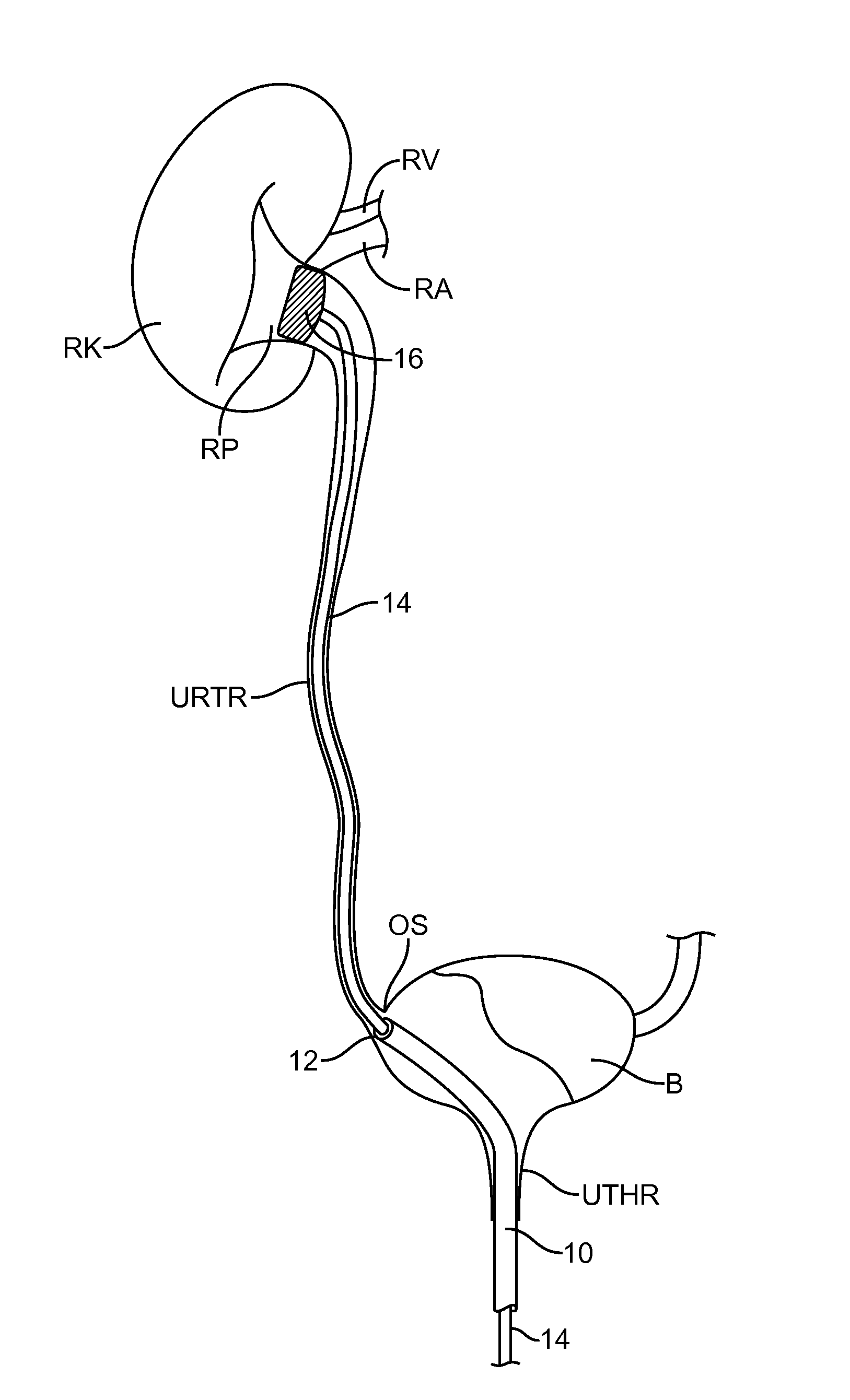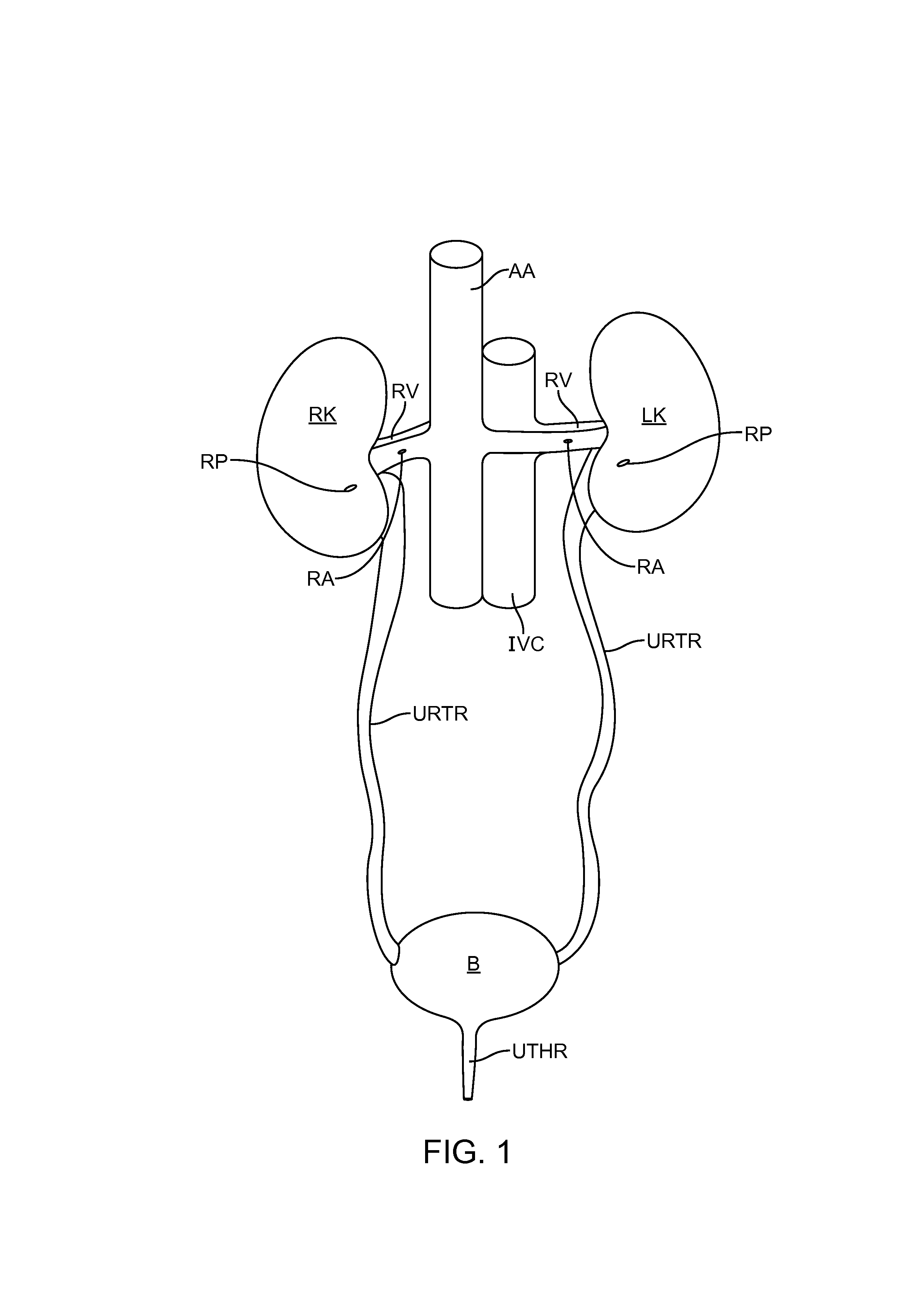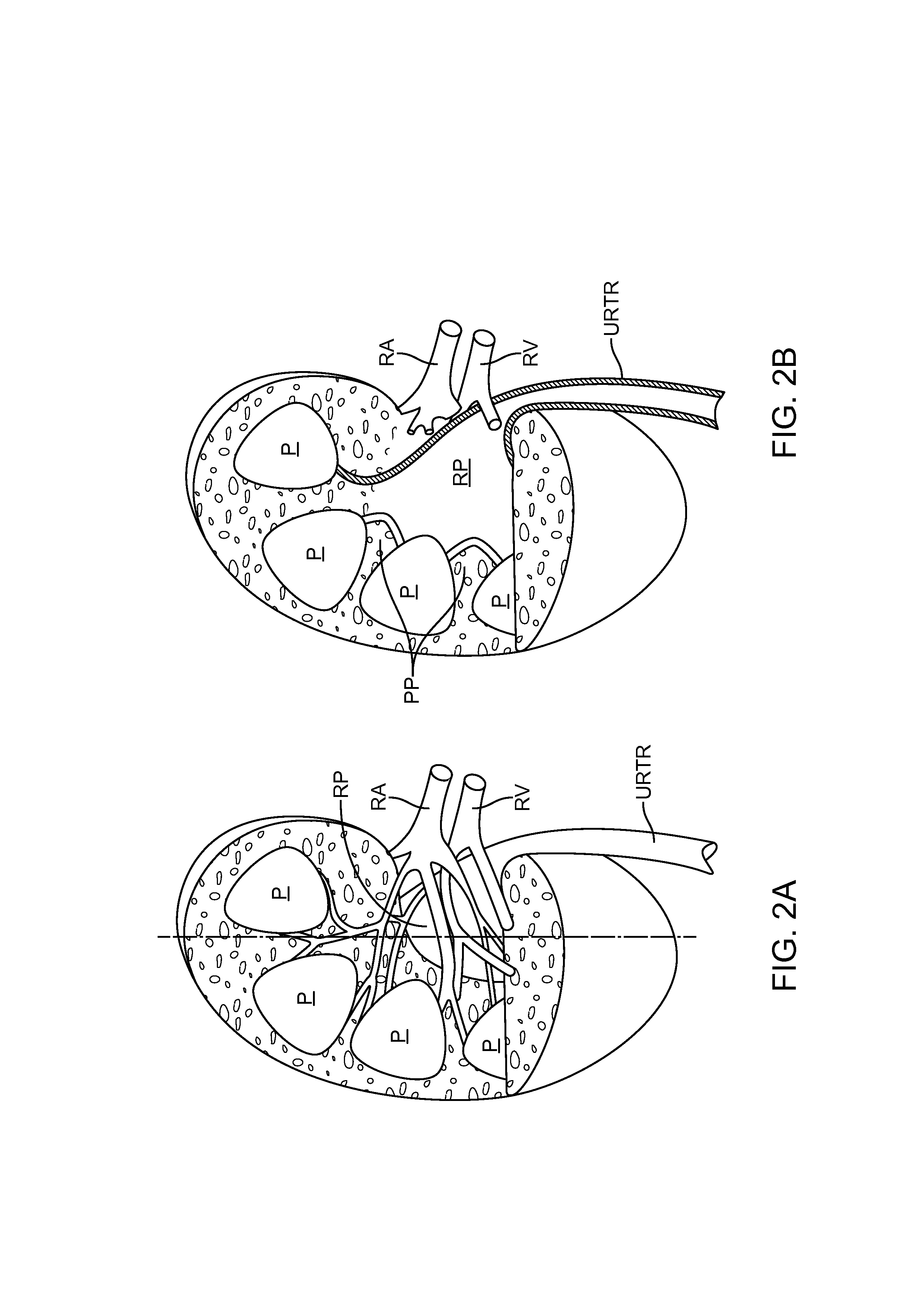Renal nerve denervation via the renal pelvis
- Summary
- Abstract
- Description
- Claims
- Application Information
AI Technical Summary
Benefits of technology
Problems solved by technology
Method used
Image
Examples
Embodiment Construction
[0039]A patient's urinary tract is diagrammatically illustrated in FIG. 1. The urinary tract includes the bladder B, which receives urine from the right and left kidneys RK and LK and drains the urine through the urethra UTHR. The kidneys each receive oxygenated blood through the renal artery RA from the abdominal aorta AA and blood from the kidneys is returned through the renal vein RV to the inferior vena cava IVC. Of particular interest to the present invention, the urine which is processed in the kidney is received in an interior cavity of each kidney referred to as the renal pelvis RP which acts as a funnel and delivers the urine into the top of the ureter URTR. The methods and protocols of the present invention will be performed within the interior of the renal pelvis RP in order to treat the renal nerves within the walls of the renal pelvis as well as the nerves surrounding the renal arteries within the adventitia and adipose tissue and to a lesser extent surrounding the rena...
PUM
 Login to View More
Login to View More Abstract
Description
Claims
Application Information
 Login to View More
Login to View More - R&D
- Intellectual Property
- Life Sciences
- Materials
- Tech Scout
- Unparalleled Data Quality
- Higher Quality Content
- 60% Fewer Hallucinations
Browse by: Latest US Patents, China's latest patents, Technical Efficacy Thesaurus, Application Domain, Technology Topic, Popular Technical Reports.
© 2025 PatSnap. All rights reserved.Legal|Privacy policy|Modern Slavery Act Transparency Statement|Sitemap|About US| Contact US: help@patsnap.com



